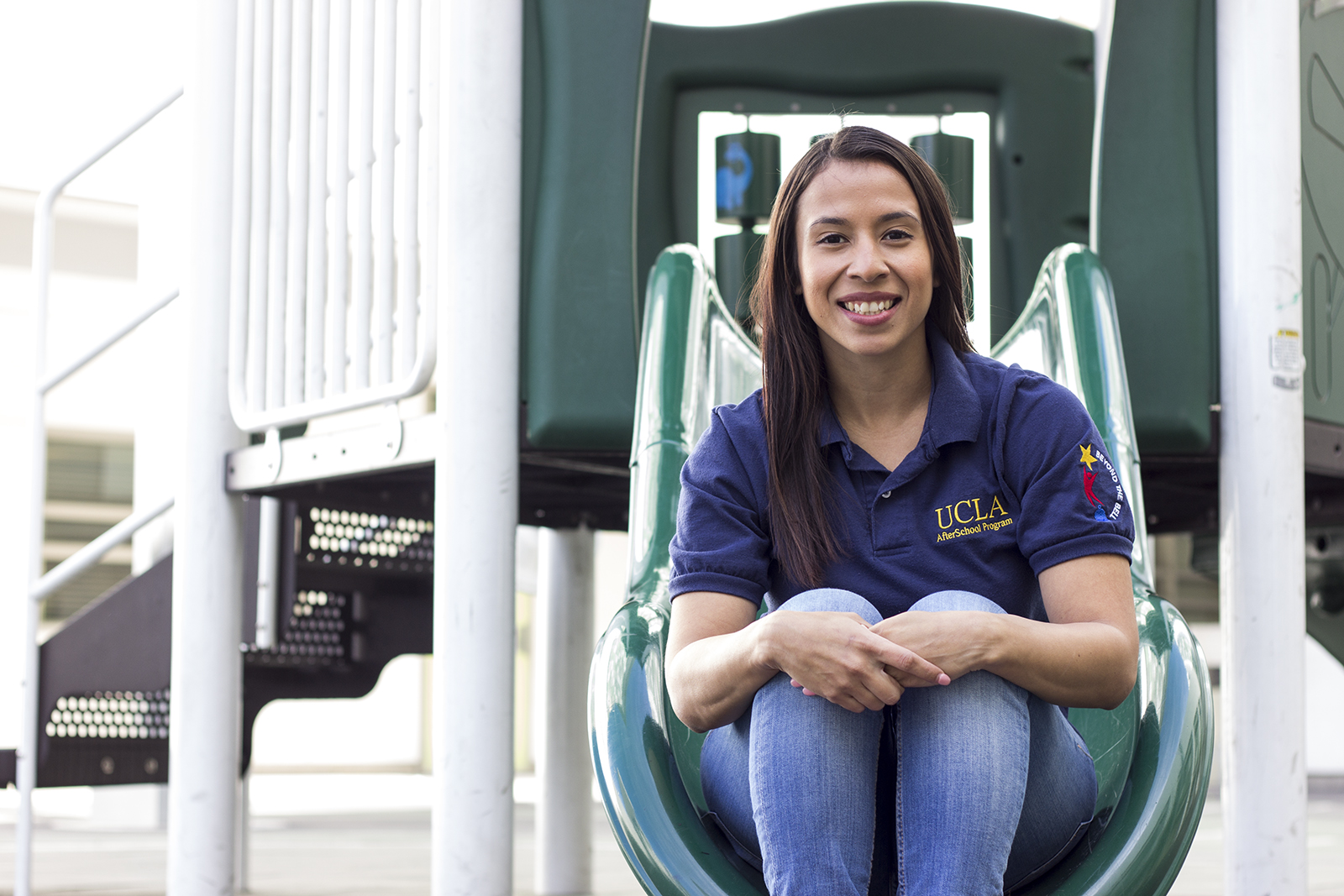UCLA Community School gives low-income families access to educational resources

(Eu Ran Kwak/Daily Bruin)
By Jonaki Mehta
Feb. 27, 2015 12:00 a.m.
The UCLA Community School gives low-income families access to state-of-the-art educational resources in the Los Angeles neighborhood of Koreatown, in part by utilizing UCLA volunteers. Fourth-year student Lindsey Kunisaki talks about teaching a variety of arts in the afterschool program through UCLA’s VAPAE program. Fourth-year sociology student and president of Yoga for Flexible Futures Alexandra Onea discusses Y.F.F.’s involvement in the afterschool program.
—
TRANSCRIPT:
MEHTA: The UCLA Community School redefines the bounds of public education in terms of what it means to work within state and national education standards. With elements like a multicultural learning environment, enrichment programs and bilingual education, the Community School is challenging the traditional classroom structure. One of the ways that the school supplements its unconventional ideologies is with an after school program through the Community Based Learning program, or CBL.
GONZALEZ: Their purpose is to bring the resources of the university, especially its faculty and students to the underserved communities of Los Angeles.
MEHTA: That’s Vanessa Gonzalez, the site coordinator for the UCLA afterschool program at the Community School.
GONZALEZ: The mission is to assist children, teenagers, and young adults with the transition from youth to adulthood. And that’s our CBL program, and that would also fall into our community school because their vision as well is to fully equip students to have an adult life where they are passionate learners, active and critical participants in society, and masters of academic content and skills. So I feel our mission at CBL and the mission of the school ties in perfectly well together.
MEHTA: The UCLA Community School offers its students a unique set of programs, some of which come from its partnership with UCLA. State-of-the-art resources such as access to internships and electives like sailing and music theory are a part of the curriculum. Though the districting system often limits such resources to wealthy neighborhoods, the Community School uses it to provide access to these underserved communities of Koreatown.
Karen Quartz, director of research at the Community School explained that over the past five years, there have been more than 30 research studies on a broad range of topics from the effects of text messaging parents on student achievement to the role of teacher autonomy in school reform – and the knowledge generated through these studies is used to strengthen the school’s program and inform the field of education more broadly.
GONZALEZ: We just really try to engage students in not just learning academic content, but also their lives with different programs that they probably wouldn’t receive otherwise unless they paid for it … A lot of the programs were actually requested by the students themselves. Like they wanted arts, sports, dance – so people from the university that wanted to volunteer or help.
MEHTA: Lindsey Kunisaki is a fourth-year student in the School of Arts and Architecture with a minor in Visual and Performing Arts Education, or VAPAE. Kunisaki conducts an afterschool program, utilizing what she learns in the VAPAE program. VAPAE gears and enables arts students to teach the arts with social justice as a central focus, making it a fitting partnership for the community school.
KUNISAKI: So what VAPAE does is it sets up this core series that’s designed to train us to design curriculum, practice it and then eventually implement it in usually elementary schools, but it ranges from K-12 really … So what VAPAE’s doing now with my role as a teaching artist at the CS, is, I think it’s expanding its efforts in community engagement in bringing student teaching artists, alumni teaching artists into these communities, most of which are underserved, and making these resources more accessible.
I also like to integrate the other academic curricula that they’re doing in their classes. So right now we’re working with different dance and movement and rhythm and visual arts, which is also supplemented by an earth science and geography unit that they’re working on … so that ultimately these students are getting a well-rounded perspective on everything that they’re learning and they get to experience it, understand it and apply it in multiple ways in their classrooms and then outside.
MEHTA: The Community School also partners with Yoga for Flexible Futures, a UCLA student organization. Third-year sociology and pre-med student, Alexandra Onea, is also the president of the health and wellness club.
ONEA: We want to get them excited about having healthy lifestyles. You know it’s not just about the yoga as a physical practice – the asana, the yoga poses – its about getting them to love being active, and getting them to love healthy foods. We have a snack each time given at the end and they look forward to them every single time. They might go for a bag of chips instead, but hopefully this way they build healthy habits and thats kind of the focus.
MEHTA: According to UCLA Newsroom, college-going rates in Koreatown have increased from 33 to 95 percent since the school opened in 2009. And perhaps a partnership with a university campus like UCLA shows these students that college is a potential within reach.
KUNISAKI: The exposure to UCLA students, to UCLA as a part of the community, as a part of their world, I think it makes a big difference in making it seem more feasible for them even as 5 year-olds.
MEHTA: For Daily Bruin Radio, I’m Jonaki Mehta.


